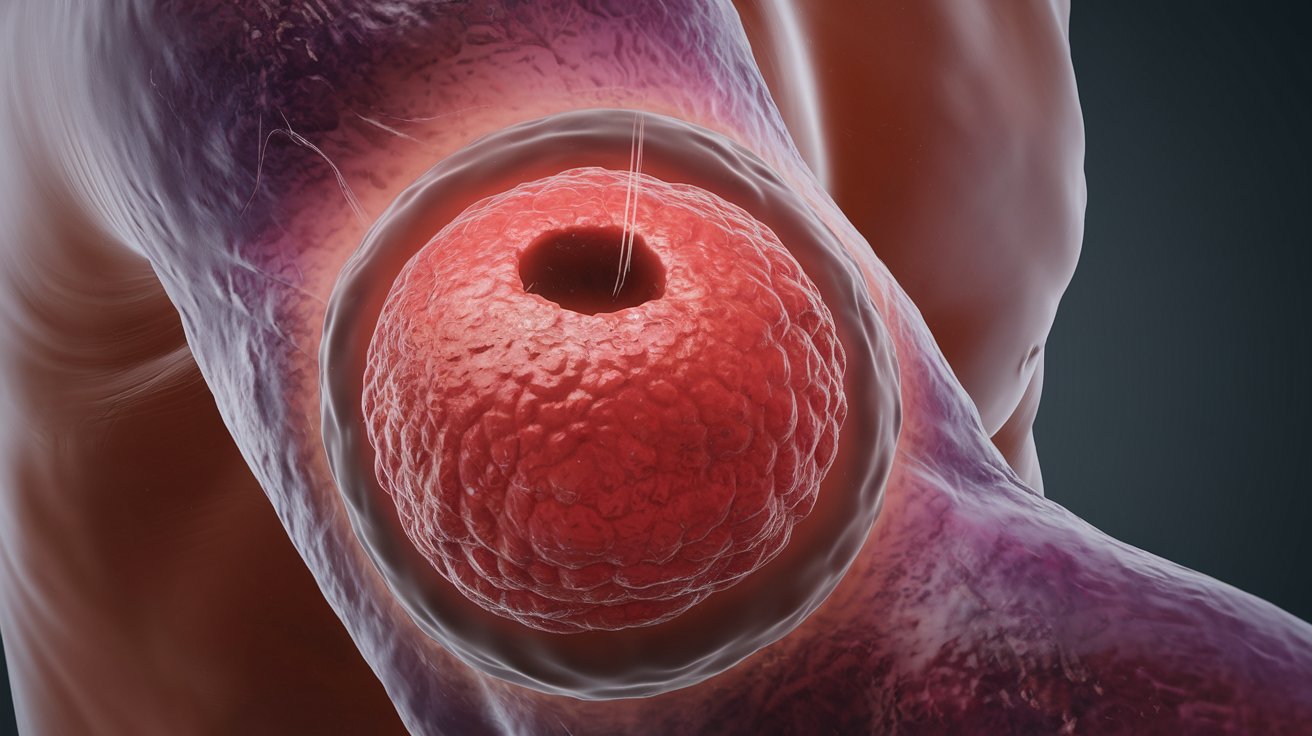
What exactly is a cold abscess? Unlike typical abscesses that come with redness, warmth, and swelling, a cold abscess is a sneaky, painless, firm mass. Often caused by mycobacterial infections like tuberculosis (TB), these abscesses can pop up anywhere in the body, from the chest wall to the spine. They don't scream for attention but can lead to serious complications if ignored. Diagnosing them involves a mix of clinical checks and imaging studies, with treatment usually revolving around anti-tubercular therapy and sometimes surgery. Understanding cold abscesses is crucial, especially in regions where TB is common. Let's dive into 25 key facts about this unusual medical condition.
Key Takeaways:
- Cold abscesses, often caused by tuberculosis, appear as painless, firm masses without typical signs of inflammation. Early diagnosis and treatment are crucial for effective management.
- Public health strategies, including vaccination programs and early diagnosis, play a key role in reducing the incidence of cold abscesses, especially in regions with high tuberculosis prevalence.
What is a Cold Abscess?
A cold abscess is a unique type of abscess that doesn't show the usual signs of inflammation. Instead of being red, warm, and swollen, it appears as a painless, firm mass. Let's dive into some key facts about cold abscesses.
-
Definition: A cold abscess is an abscess that lacks typical inflammatory signs like redness, warmth, and swelling. It often presents as a painless, firm mass.
-
Causes: The most common cause of cold abscesses is mycobacterial infection, particularly tuberculosis (TB). Other causes include BCG vaccine-induced infections and non-tuberculous mycobacterial infections.
How Does a Cold Abscess Present?
Understanding how a cold abscess presents can help in early detection and treatment. Here are some common symptoms and diagnostic methods.
-
Presentation: Cold abscesses typically present as a painless, firm mass that may be fluctuant or fixed to underlying tissues. They can occur in various parts of the body, including the chest wall, spine, and sternum.
-
Symptoms: The primary symptom of a cold abscess is a painless swelling. Other symptoms may include chest pain, swelling of the chest wall, or ulceration of the skin with a discharging sinus.
-
Diagnosis: Diagnosis of a cold abscess is primarily based on clinical presentation and imaging studies. However, definitive diagnosis is established by positive culture or histopathological examination.
Diagnostic Tools for Cold Abscess
Accurate diagnosis is crucial for effective treatment. Here are some tools and methods used in diagnosing cold abscesses.
-
Imaging Studies: Chest X-rays and thoracic CT scans are commonly used to diagnose cold abscesses. These imaging studies can show costal lysis or sternal lysis, indicating bone involvement.
-
Bacteriological Examination: Direct examination of pus samples is often negative, but culture on Lowenstein-Jensen medium or GeneXpert testing can be positive in cases of TB.
-
Pathological Features: Histopathological examination typically reveals characteristic lesions of tuberculosis, including giant cell granuloma and caseous necrosis.
Treatment Options for Cold Abscess
Treating a cold abscess involves a combination of medication and sometimes surgical intervention. Here are the main treatment methods.
-
Treatment: The mainstay of treatment for cold abscesses caused by TB is anti-tubercular therapy with a standard four-drug regimen for 6-9 months. Surgical drainage of the abscess may be considered if it does not resolve with aspiration and anti-tubercular therapy.
-
Surgical Management: Surgical intervention involves elective incision to drain the abscess, resection of necrotic tissue, and sometimes sternal or costal curettage. Samples of pus, necrotic tissue, and bone are sent for bacteriological examination to confirm the diagnosis.
Public Health and Cold Abscess
Cold abscesses have significant public health implications, especially in regions with high TB prevalence. Here are some facts related to public health.
-
Public Health Significance: Tuberculosis is a significant public health problem in developing countries, and cold abscesses represent a rare but important manifestation of extrapulmonary TB.
-
Prevalence: Cold abscesses are relatively rare, especially when compared to pyogenic abscesses. However, they are more common in regions with high TB prevalence.
Special Cases and Considerations
Certain populations and conditions can increase the risk of developing cold abscesses. Here are some special cases and considerations.
-
Clinical Experience: Case series and clinical experiences have documented various presentations of cold abscesses, including multiple abscesses on the chest wall with rib destruction in hemodialysis patients.
-
Hemodialysis Patients: Hemodialysis patients are at increased risk for developing cold abscesses due to their compromised immune status and repeated exposure to invasive medical procedures.
-
Non-Tuberculous Causes: While TB is the most common cause, non-tuberculous mycobacterial infections can also lead to cold abscesses. These infections are less common but still significant in certain populations.
-
BCG Vaccine-Induced Abscesses: BCG vaccine-induced cold abscesses are rare but have been reported in infants following improper vaccination. These abscesses typically occur in the thigh muscle.
Demographics and Distribution
Cold abscesses can affect anyone, but certain demographics are more prone. Here are some facts about the age, gender, and regional distribution of cold abscesses.
-
Age and Gender Distribution: Cold abscesses can occur in any age group, but they are more commonly seen in adults. The gender distribution varies, with some studies showing a higher incidence in males.
-
Regional Distribution: The distribution of cold abscesses varies geographically. In regions with high TB prevalence, such as Africa and Asia, cold abscesses are more frequently encountered.
Complications and Prognosis
Untreated cold abscesses can lead to serious complications. Here are some potential complications and the general prognosis for treated cases.
-
Complications: Untreated or inadequately treated cold abscesses can lead to serious complications, including bone destruction, fistula formation, and systemic spread of infection.
-
Prognosis: With appropriate treatment, the prognosis for cold abscesses is generally good. However, recurrence can occur if the underlying infection is not fully treated.
Duration and Outcomes of Treatment
The duration and success of treatment can vary. Here are some facts about the treatment duration and outcomes for cold abscesses.
-
Treatment Duration: The duration of anti-tubercular therapy for cold abscesses typically ranges from 6 to 9 months, depending on the severity of the disease and the patient's response to treatment.
-
Surgical Outcomes: Surgical intervention for cold abscesses is often successful, with minimal recurrence rates reported in case series. However, each case requires individualized management based on clinical presentation and imaging findings.
Importance of Histopathological and Bacteriological Confirmation
Confirming the diagnosis through histopathological and bacteriological methods is crucial. Here are some facts about these confirmation methods.
-
Histopathological Confirmation: Histopathological examination is crucial for confirming the diagnosis of a cold abscess. The presence of giant cell granuloma and caseous necrosis is indicative of TB.
-
Bacteriological Confirmation: Bacteriological confirmation involves culturing the abscess material on Lowenstein-Jensen medium or using GeneXpert testing. These methods help in identifying mycobacterial infection.
Public Health Strategies
Effective public health strategies can help reduce the incidence of cold abscesses. Here are some strategies aimed at controlling TB and cold abscesses.
- Public Health Strategies: Public health strategies aimed at controlling TB, such as vaccination programs and early diagnosis, are essential in reducing the incidence of cold abscesses. Additionally, awareness among healthcare providers about the clinical presentation of cold abscesses is crucial for early diagnosis and treatment.
Final Thoughts on Cold Abscess
Cold abscesses, often linked to mycobacterial infections like tuberculosis, present unique challenges due to their lack of typical inflammatory signs. Recognizing a painless, firm mass as a potential cold abscess is crucial for early diagnosis. Imaging studies and bacteriological examinations play key roles in confirming the condition. Treatment usually involves anti-tubercular therapy and sometimes surgical drainage. Awareness of this condition, especially in regions with high TB prevalence, can lead to better outcomes. Hemodialysis patients and those with compromised immune systems should be monitored closely. Public health strategies focusing on TB control are essential in reducing cold abscess cases. With proper treatment, the prognosis is generally good, but vigilance is necessary to prevent recurrence. Understanding these facts helps in managing cold abscesses effectively, ensuring timely and appropriate care.
Frequently Asked Questions
Was this page helpful?
Our commitment to delivering trustworthy and engaging content is at the heart of what we do. Each fact on our site is contributed by real users like you, bringing a wealth of diverse insights and information. To ensure the highest standards of accuracy and reliability, our dedicated editors meticulously review each submission. This process guarantees that the facts we share are not only fascinating but also credible. Trust in our commitment to quality and authenticity as you explore and learn with us.


